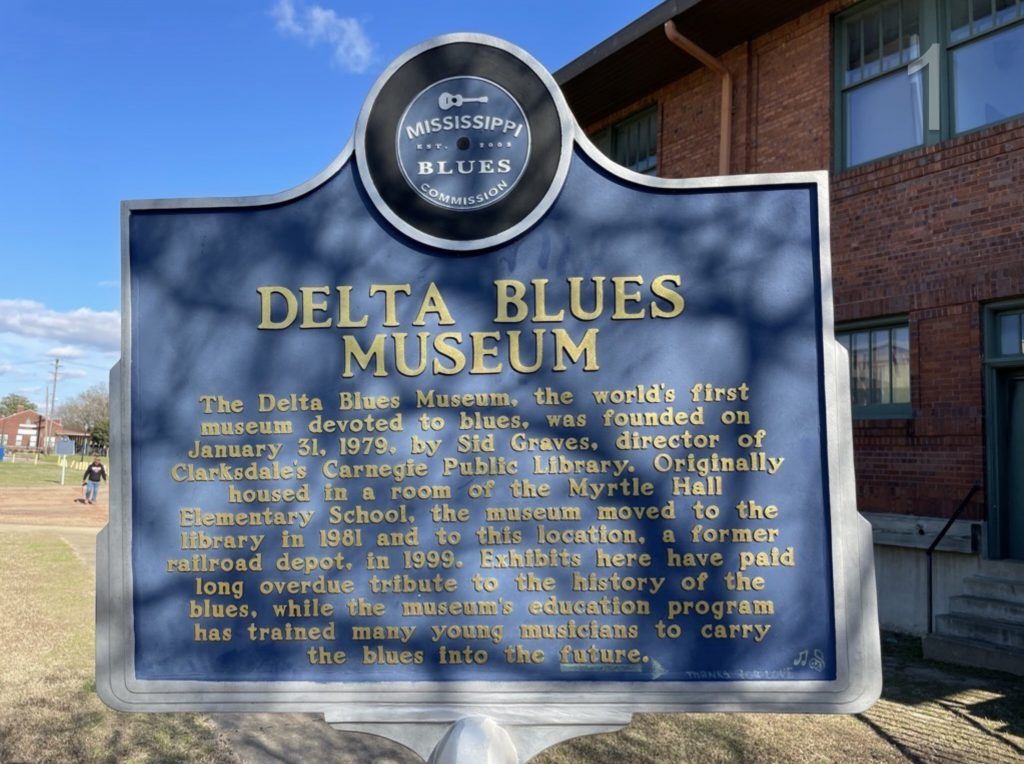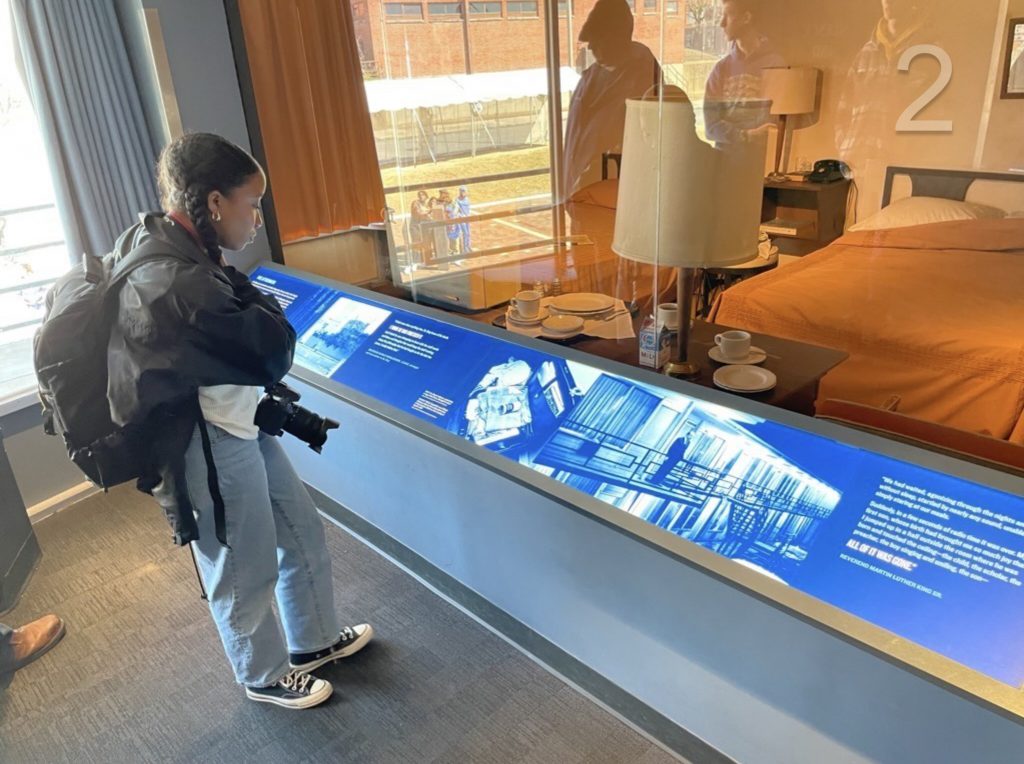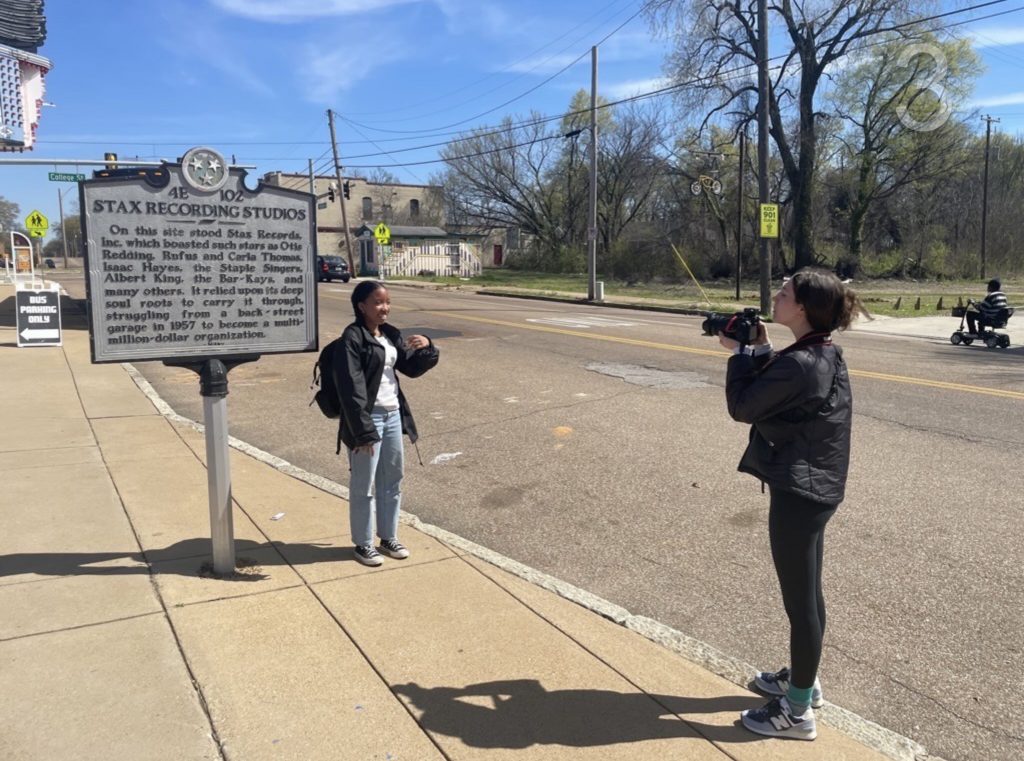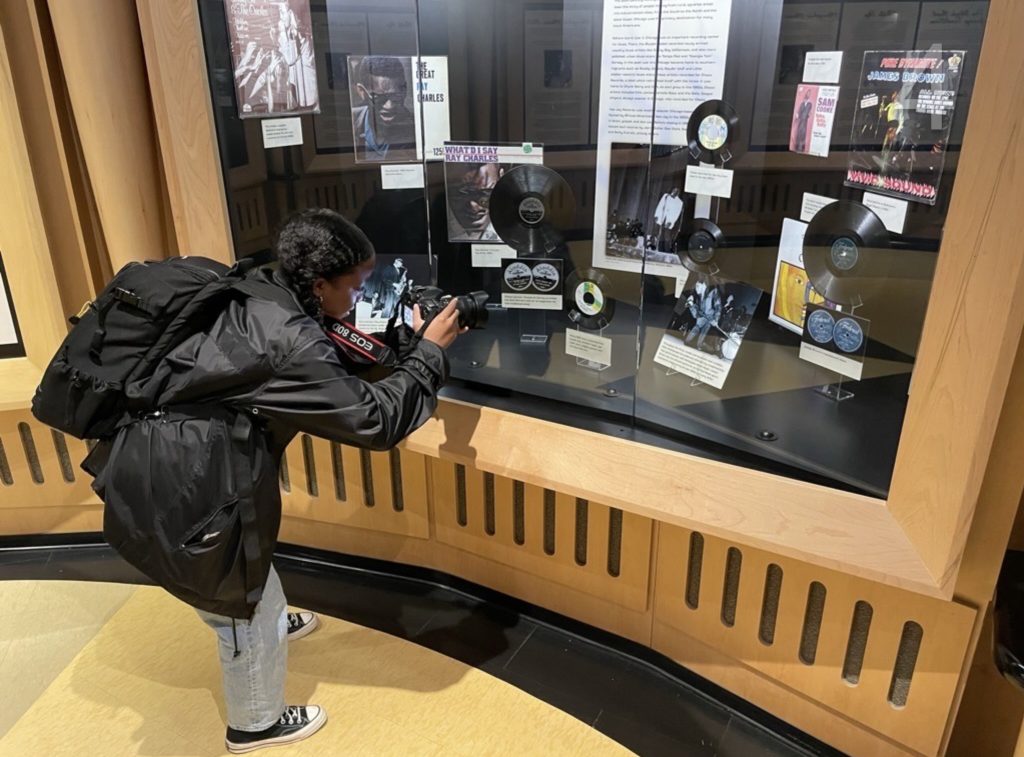By Sydney Johnson | May 22, 2023
I have always appreciated the musicality of life. Whether through the pitapat of rain or birds chirping in sunshine, there’s so much rhythm out there that can engulf the mind in song. So it was truly wonderful, during our spring break journey along the U.S. Civil Rights Trail, that I constantly found music in the most unexpected places.
My classmates worried when we encountered heavy rain and hail pounding atop our rented 15-seat Mercedes van, on Interstate 10 on the Florida Panhandle. But I heard music in the constant pitter-patter hushing our inquisitive minds, as if forcing us to listen to nature’s melodies.
I heard music along the way in Alabama, Mississippi, Arkansas, Tennessee and Georgia. Was that chirping that of an American Goldfinch? The Northern Cardinal? More importantly, I heard music on the lips of people in the black-and-white photos hanging on the walls of the many museums we visited. Blues that melted into my skin and shook my bones. Spirituals that weighed heavy on my consciousness. Funk that spoke to my soul and reinvigorated my spirit.
To me, music acts as the perfect time capsule. Oral tradition, records, cassette tapes, compact disks and streaming services have helped to preserve the legacy of the African American experience. From the smooth vibrato of Mahalia Jackson to the poetic but urgent pleas of Public Enemy, music has chronicled the quest for civil rights and social justice.
I had heard this music before. It played in the homes of my mother and her mother before her. To a child, the music reflected a distant past – something that I could never trace my roots back to. My parents hail from the Caribbean. Their ancestors did not sing in words I can understand. Yet when they stepped onto American soil, they became something new. They were Black, and by American design, so was I.
This identity had been given to me and was not entirely mine, so I had expected to travel the civil rights trail as merely an observer. I feared continuing the disconnect felt for most of my life, an ever-present distance from what I had learned and my actual being. Could I hear the music without the ability to truly listen?
From Billy Holiday to Mahalia Jackson to Nina Simone, this playlist presents artists whose songs helped the quest for civil rights. (Sydney Johnson/WUFT News)
On the second day of our trip, we visited The Legacy Museum in Montgomery, Alabama.
We were greeted by the violent crashing of waves projected onto the walls around us, as if in the middle of a simulated ocean. The museum’s audiovisual intensity was matched only by a narrative message that honored those lost to the sea in the transatlantic slave trade.
As I walked through the museum, it became clear that this journey would have a profound effect on me. That the volume of what I would witness would become so deafening that it could not be drowned out. Much of the trip was like this. Symphonies of knowledge that challenged what I had been taught in my years of schooling – now refusing to be silenced.
As an extension of my project, I created a playlist chronicling what I heard. It includes Civil Rights Movement songs noted by others traveling the trail. Some songs I knew, including “Strange Fruit,” by Billie Holiday, and some I did not, including “Latter,” by Saulsberry.
I discovered songs echoing from those museum walls. Songs of bondage. Hymns passed down through generations of African American anguish. Collecting what I heard was daunting. There were times the music was too much. Like when facing a holographic woman, frozen behind cold steel bars, whose voice yearned for a place beyond her confinement. Standing before this reanimation stopped me for a while. Her song demanded I bear witness to her sorrow. “Lord, how come me here?” she asked. It’s a question that may never be answered and yet haunts me.
The music at the Delta Blues Museum in Clarksdale, Mississippi, was made by those who answered their own questions. Slaves and sharecroppers used songs to resist their circumstances. They passed the melodies to their descendants who resisted through massive nonviolence. Musicians’ soulful voices guided their truths into the ears of the masses. Sister Rosetta Tharpe, Muddy Waters, B.B. King, etc., all refused to let the reality of their times silence their voices.




As we continued along the trail, my playlist expanded, and similarly so did my perspective. My fear of viewing the trail and its history as an outsider faded. My family had adopted this history when they came to America, but it was irrevocably and unmistakably mine. It became so when I checked “Black or African American” on all those standardized tests in my past schools. When, as a girl, I spent summers in Alabama surrounded by good food and my stepfather’s warnings not to make any trouble. When my father told me about his childhood in North Miami, where slurs flew and heat sweltered. When an ex-partner, who is white, told me that his parents would not approve of him bringing a Black girl home. This identity that I had always felt was placed on my shoulders was now worn as a cloak of pride.
The civil rights trail opened both my eyes and ears, its painful history reiterating itself every stop along the way. In the company of my UF classmates and instructors, and those joining us from FAMU, I realized my connection to this history in a space that felt comfortable. I am thankful to have been with a groups of peers who lived this experience with me.
All in all, I believe that music’s ability to establish community is one of its most powerful attributes. From sing-a-longs on the bus to merely listening to shared playlists, our little group of journalists formed a bond built on understanding. I thank this journey for its impact on my life – and for providing the music and leaving it up to me to listen.
#UFxFAMU1963 stopped at the Emmett Till Intrepid Center in 📍Glendora, MS where we were able to interview some students from @MarquetteU ! pic.twitter.com/p1Cq1d3jbO
— Sydney Johnson (she/her) (@sydajohnson15) March 14, 2023